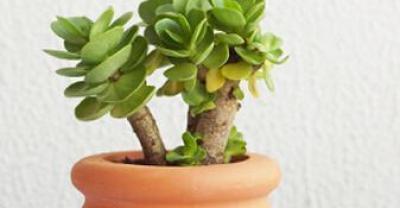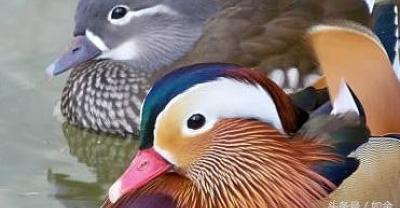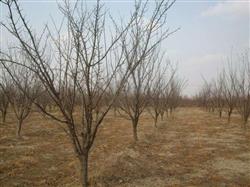larvae Learn more about larvae
-
Living habits of big-eyed larvae of river crab

Living habits of big-eyed larvae of river crab
2018-07-04 -
What kind of food do dragonfly larvae eat?

What kind of food do dragonfly larvae eat?
2018-09-08 -
Related data of feed culture experiment of black water gadfly larvae

(1) study on the application of black water gadfly larvae in pig feed 1. Study on the application of black water gadfly larva in fattening pig feed; dried black water gadfly larva powder can be used.
2019-02-27 -
What's the name of the dragonfly larva?

What's the name of the dragonfly larva?
2018-06-29 -
Selection of artificial breeding King transfer worms in Bee Culture Technology

In addition to the close relationship between queen bee weight and egg weight and queen bee quality, all factors in the process of artificial rearing have a great influence on queen bee quality.
2019-02-27 -
Cultivation Technology of Barley Worm

Cultivation Technology of Barley Worm
2018-09-08 -
Occurrence and integrated control of sheep nose fly

Sheep nose fly is a disease caused by sheep nose fly larvae parasitic in the nasal cavity of sheep, which mainly harms sheep. The adults of sheep nose flies produce larvae directly, and the larvae change into adults by pupa. The adult sheep nose fly appears from May to September every year. After mating between male and female, the male fly dies and the female flies perch. After the larvae in the body develop, they fly and breed maggots and larvae in the nostrils of sheep. The first stage larvae attached to the nasal mucosa of sheep, and gradually migrated intranasally, until they degenerated into the second stage larvae in the nasal cavity and frontal sinus, and developed into mature third stage larvae in the spring of the second year.
2019-01-16 -
What does the newly opened baby fish fry eat?

What does the newly opened baby fish fry eat?
2018-07-04 -
What are the larvae of common flying animals such as flies, cicadas, mosquitoes, butterflies and dragonflies?

In our daily life, we often see five kinds of small flying animals: flies, cicadas, mosquitoes, butterflies and dragonflies. The larvae of these five kinds of animals are all very obscure, so what are the larvae called? According to data, fly larvae are commonly known as qu.
2020-11-11 Common flying animals flies cicadas mosquitoes butterflies dragonflies -
Control of diseases and pests of diamondback moth in walnut tree

1. The symptoms of distribution and damage are omnivorous pests. The common pests are Spodoptera litura, Plutella xylostella, Spodoptera litura and Spodoptera litura, which are distributed all over the country. Feeding on leaves by larvae affects tree potential and yield, and is an important pest of walnut leaves. Young larvae feed on leaves
2020-11-27 Walnut trees stinging moths diseases and insect pests control distribution and damage -
What do you mean, scratch the surface? Why do dragonflies order water?

Dragonflies are the general name of dragonflies and dragonflies. Adults usually fly in ponds or rivers to prey on flying insects, and larvae (juveniles) develop in the water. We can often see dragonflies flying low on the surface of the water, dipping into the water from time to time.
2020-11-11 Dragonfly what do you mean dragonfly why water? -
How long do dragonflies live? Are dragonflies beneficial or harmful?

Dragonflies are the general name of insects in the family Odonata and Sphenidae. They belong to incomplete metamorphosis insects. There are about 5000 species in the world, and about 300 species are distributed in China. Among them, there are many species of the most common dragonflies, such as green dragonflies, yellow dragonflies and long-leaf heteromoles.
2020-11-11 dragonflies generally can live for a long time are they beneficial insects or pests? -
Control of hookworm disease in cultured Pelteobagrus fulvidraco

[etiology] the pathogen was hook larva (Glochidium sp.). The fertilized eggs of the clam develop into hookworm larvae in the outer Gill cavity of the female clam, then leave the mother body to float in the water, come into contact with the fish body, and parasitize on the fish body. The larvae are metamorphosed by absorbing nutrients from the fish and develop into young clams.
2020-11-08 Culture yellow fish fish hook medium larva disease prevention and treatment etiology -
Experience of Pest Control in Apricot cultivation

Apricot wasp: the larva overwinters in the apricot kernel or in the apricot nucleus on the branch, the female adult lays eggs between the nuclear skin and the almond, the spawning hole on the fruit surface is not obvious, slightly grayish green, sunken, sometimes there is apricot gum outflow from the spawning hole, and the egg period is about 10 days. Hatched larvae eat damage in the nucleus
2020-11-08 Apricot cultivated pest control experience almond bee larva -
How to control longicorn beetle larvae?

How to control longicorn beetle larvae? Longicorn beetle larvae are very harmful to fruit trees. how to prevent and control longicorn beetles? the harm of longicorn beetles: longicorn beetle larvae spin their skin (gnawing on the green epidermis of the trunk); killing longicorn beetles do harm to the branches and trunks, eating the xylem into crisscross tunnels and drilling into the middle of the stem.
2018-07-11 -
Maisui Ye

The scientific name Apameasordens (Hufnagel) belongs to Lepidoptera, Noctuidae. Alias wheat spike worm. Distributed in Inner Mongolia, Gansu, Qinghai and other provinces. Host wheat, barley, highland barley, wheatgrass, horse lotus grass and so on. The damage characteristics of the newly hatched larvae first feed on the flower organ and ovary of the ear, and individually feed on the tender surface of the inner wall of the glume, and then transfer to the damage. After the 3rd instar, the larvae latent in the grain, and after the 4th instar, the larvae transfer to the flag leaf to spin silk and connect the leaf margin to form a tube, and look for wheat ears to feed after sunset.
2019-01-15 -
What's the point of touching the water?

What's the point of touching the water?
2018-09-08 -
Occurrence and control of jujube armyworm

Jujube armyworm, also known as jujube sickle wing small roll moth, commonly known as leaf stick insect, jujube is one of the important pests. To larvae silk roll leaves harm, the leaves were vertical roll dumplings, or silk several leaves tied together. Larvae also eat stick leaf fruit, greatly affect the yield. 1. Occurrence Regularity This insect has 3 generations a year and overwinters as pupae in thick skin slits of branches. Adult day out night, phototaxis is very strong, after emergence 1 to 2 days to lay eggs, eggs scattered in smooth twigs and jujube strands,. Egg stage 10 to 25 days, first generation larvae occur
2019-01-16 -
Pest Control of Apricot cultivation

Apricot wasp: the larva overwinters in the apricot kernel or in the apricot nucleus on the branch, the female adult lays eggs between the nuclear skin and the almond, the spawning hole on the fruit surface is not obvious, slightly grayish green, sunken, sometimes there is apricot gum outflow from the spawning hole, and the egg period is about 10 days. The hatched larvae eat almonds in the nucleus, resulting in a large number of fruit drops. Around the beginning of June.
2018-09-13 -
Occurrence and control of soybean diamondback moth

The harmful symptom is that the larvae feed on the leaves, and the low instar larvae eat into mesh and notch shape. after the third instar, the larvae can eat all the bean leaves, so that the plant can not bear pods, which has a great impact on the yield. The occurrence regularity is the peak spawning period of adults from mid-late July to early August, the peak period of larval damage from late July to late August, and the yellowish mature larvae in early September to overwinter. Adults of living habits: adults go out day and night and have a strong tendency to black light. Start activities in the evening and fly
2019-01-16
